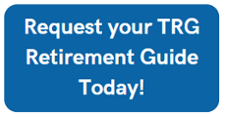Comparing Bond Prices
Comparing bond prices can be a bit more challenging than comparing stock quotes. Because there are so many more bonds than stocks on the market, any printed listing of bond prices often includes only a representative selection of issues. And bond prices are quoted a bit differently than stocks are. Finally, many bonds don't trade every day, so a bond may sell for a very different price from the most recently published price. As a result, it can be difficult for an individual investor to find a price for a specific bond on his or her own, though the Internet has made finding information about bonds a bit easier.
Nonetheless, understanding how to interpret bond market tables can be helpful as it can provide you with a broad understanding of the prices at which different bonds are selling. As soon as you grasp how the data is presented, you can utilize it to find out how much bonds that are comparable to your own are worth or whether there is a chance to purchase bonds with higher yields.
The organization providing the data has some influence over the information supplied. Nonetheless, a quote for a Treasury security may contain all or some of the following details:
-
The coupon rate.
-
The maturity date.
-
The bid price--what someone is willing to pay for the bond.
-
The ask price--what someone is willing to sell the bond for.
-
Any change in price from the day before, also expressed as a percentage.
-
The yield, based on the ask price. Depending on whether the bond is callable, the yield figure might represent either the yield to maturity or the yield to the first date the bond could be called.
Quotes for corporate bonds traded on major exchanges are listed slightly differently. Like Treasuries, a corporate listing will include the coupon rate, and the maturity date. Price data would typically include the closing price, the change in price from the previous day, and the yield based on the most recent price. In addition, a corporate bond table might include:
-
The company name
-
The volume (the number of those bonds traded that day)
-
The spread between the bond's yield and that of a comparable Treasury security
-
The bond's credit rating
A table containing the issuer's name, coupon rate, maturity date, most current price, price change, and yield to maturity based on the bid price would be provided for municipal bonds.
Note: The principal value of bonds may fluctuate with market conditions. Bonds redeemed prior to maturity may be worth more or less than their original cost. Investments seeking to achieve higher yields also involve a higher degree of risk.

How Bond Prices Are Quoted
Reading a bond table is a little different from reading a stock quote. In general, a bond's price is listed as a percentage of the bond's par value. For example, if a Treasury bond were quoted as 97, the bond would be selling for roughly 97 percent of its face value. If the same bond were quoted at 103, it would be selling at a premium.
Bonds often trade in fractional prices. How that fraction is represented depends on what type of bond it is. Treasury bonds and notes are quoted in a slightly different way than corporate and municipal bonds. For prices of Treasury securities and bonds issued by government agencies and government-sponsored entities (GSEs), the fraction is quoted in 32nds of a dollar.
Example(s): A Treasury bond is listed as having an ask price of 97:24. That means the bond is selling for 97 24/32 percent of its face value. The ask price of 97.24 represents $97 plus 24/32 of a dollar (75 cents), or $97.75 for each $100 in face value.
Municipal and corporate bonds are quoted in percentages plus eighths of a percentage point. They may be listed as fractions (80 1/8) or by the decimal equivalent (80.125).
Example(s): The ask price for a $25,000 municipal bond is listed as 105 3/8. That means the bond is selling at a premium--$105 plus 3/8 of a dollar (37.5 cents) for each $100 in face value. Therefore, the total price for the $25,000 bond equals $26,343.75.
How Accrued Interest Is Handled
When a bond is sold, the interest accrued since the last interest payment but not yet paid out is calculated and added to the bond's sale price. If you are buying the bond, you will compensate the seller for the interest they have earned since the last coupon payment; if you are selling, you will receive that accrued interest.
Understanding Bond Transaction Costs
If you buy a new bond issue, the transaction cost is built into the offering price. For any transactions after that initial issue--in other words, if you buy a bond on the secondary market--there is a difference between what the seller charges and the price you pay.
The broker receives this markup, also known as the spread, in exchange for managing the deal. The amount of the markup may alter depending on the size of the bond sale, if it is sold over the counter or on an exchange, and if a broker-dealer needs to look for a particular bond that isn't currently in stock. The bond will be sold at a discount to its market value if you want to sell it before it matures, allowing for an additional markup to cover the broker's fees.
